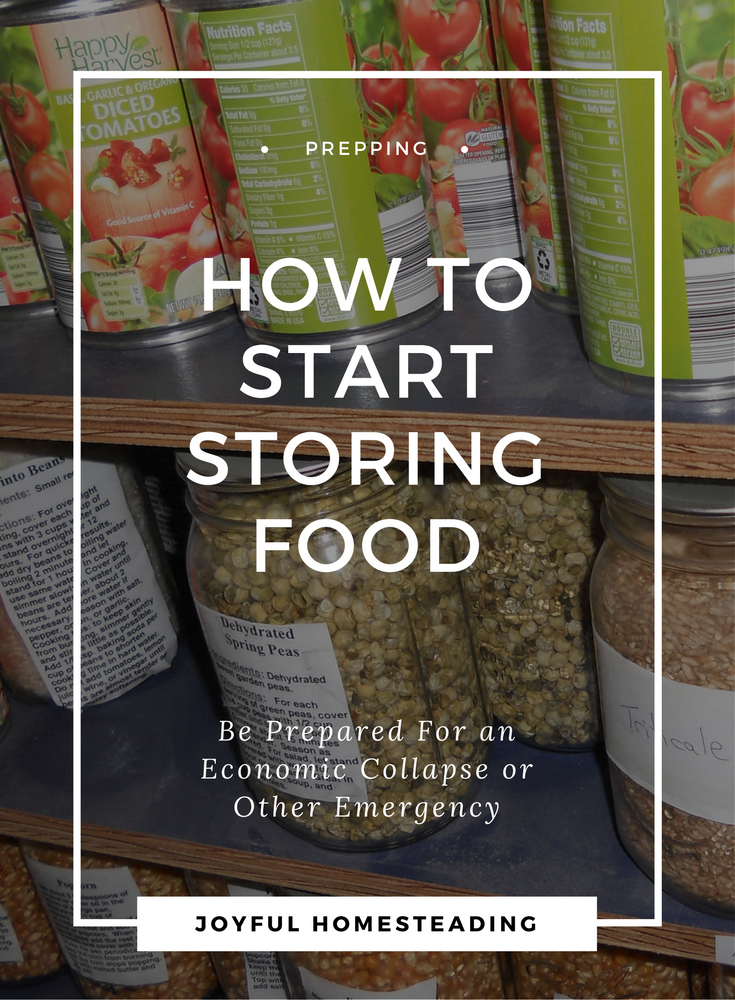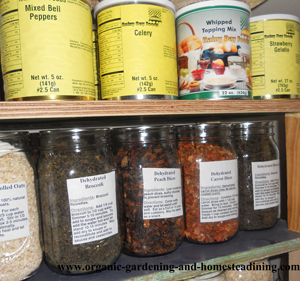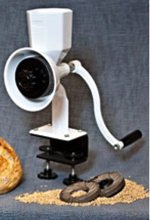How to Store Foods
Learn how to store foods, and you’ll not only be prepared for any emergency that comes your way - whether national, local or personal - but you’ll also be saving money in the long run. Having a store of foods on hand will give you the freedom to shop wisely and pursue self-reliant living at its fullest.

The ideal goal is to have a year’s supply of storable food on hand. But for many who are on a limited budget, that may not be practical.
But you probably can, at the outset, afford a 25 pound bag of beans and a 20 pound bag of rice (both are available at either Sam’s club or online). Buy them even if you’re not a big fan of beans and rice.

If an EMP strikes or a full-blown economic collapse occurs, you will be able to provide your family with nutritional, if boring, meals until you are able to obtain food through gardening.
But once you’ve invested in those beans and rice, start investing in other foods you like and are most likely to eat. Here are some tips on how to store those beans and rice, as well as other foods.
How to Store Foods - Consider Your Nutritional Needs
When planning on how to store foods, think about the kinds of food that make you feel good. Do fruits and vegetables give you instant energy? Or do you need meat at each meal to help you feel your best? While we all need to eat healthy, nutritional foods, different types of foods work best for different kinds of people. So be sure to store plenty of the types of food you and your family need and enjoy eating.
But also keep in mind that processed foods aren’t the best form of nutrition. They tend to be loaded with preservatives and contain GMO’s. You don’t want to compromise your health, especially in an emergency, so be sure to include healthy, real foods in your stored food supply.
Learn Canning Techniques
The best food possible is your own fresh garden produce. Since most people can’t grow food all year long, the next best choice is your own stored produce. You can preserve your garden’s bounty by canning it. If you don’t know how to can food, contact your local extension office to find a local canning class.
Dehydrate Your Own Meat, Fruits and Vegetables
Better still, learn how to dehydrate your fruits and vegetables to preserve far more of the nutrients and take up less space. Use a vacuum sealer to store your dehydrated fruits and vegetables in canning jars, and they will last for years.
The problem with virtually any commercially prepared foods are the chemicals and preservatives added into them so they can last a long time on a grocery shelf. You can eliminate those harmful ingredients, have the best quality foods and save money by investing in a dehydrator and preserving your own meats, fruits and vegetables.
The Healthy Grains
|
When learning how to store foods, don't forget to stock up on bulk grains, along with a good quality, hand-operated grain mill like this one and also a good quality sprouter. |
Not only can you make your own healthy bread, but you can also grow sprouts from your grains, providing you and your family with a fresh source of healthy greens and vitamins.
Don't Forget Water
Store at least enough water for you and your family members to have two gallons of water per person, per day for at least two weeks. For one person, that would be 28 gallons of water. For a family of five, that would be 140 gallons of water.
Also invest in a good water filtration system that isn't dependent on electricity. A good water filter will be well worth the investment. Set up a simple rain barrel collection system that will catch rainwater, so that you get a renewed source of water every time it rains.
Related article: How to be prepared for a medical emergency.











New! Comments
Have your say about what you just read! Leave me a comment in the box below.